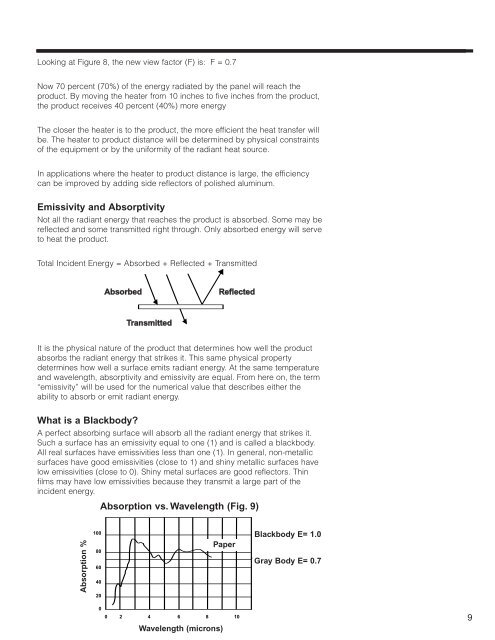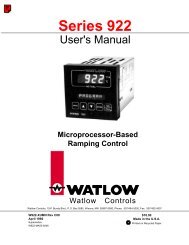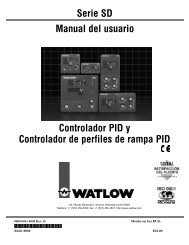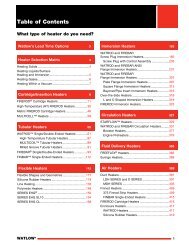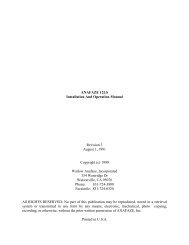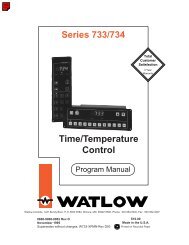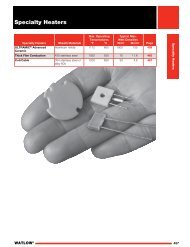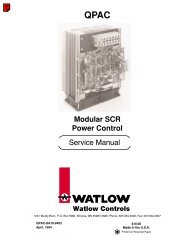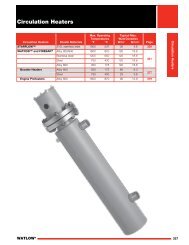RADIANT HEATING WITH INFRARED - Watlow
RADIANT HEATING WITH INFRARED - Watlow
RADIANT HEATING WITH INFRARED - Watlow
Create successful ePaper yourself
Turn your PDF publications into a flip-book with our unique Google optimized e-Paper software.
Looking at Figure 8, the new view factor (F) is: F = 0.7<br />
Now 70 percent (70%) of the energy radiated by the panel will reach the<br />
product. By moving the heater from 10 inches to five inches from the product,<br />
the product receives 40 percent (40%) more energy<br />
The closer the heater is to the product, the more efficient the heat transfer will<br />
be. The heater to product distance will be determined by physical constraints<br />
of the equipment or by the uniformity of the radiant heat source.<br />
In applications where the heater to product distance is large, the efficiency<br />
can be improved by adding side reflectors of polished aluminum.<br />
Emissivity and Absorptivity<br />
Not all the radiant energy that reaches the product is absorbed. Some may be<br />
reflected and some transmitted right through. Only absorbed energy will serve<br />
to heat the product.<br />
Total Incident Energy = Absorbed + Reflected + Transmitted<br />
Absorbed<br />
Transmitted<br />
Reflected<br />
It is the physical nature of the product that determines how well the product<br />
absorbs the radiant energy that strikes it. This same physical property<br />
determines how well a surface emits radiant energy. At the same temperature<br />
and wavelength, absorptivity and emissivity are equal. From here on, the term<br />
“emissivity” will be used for the numerical value that describes either the<br />
ability to absorb or emit radiant energy.<br />
What is a Blackbody?<br />
A perfect absorbing surface will absorb all the radiant energy that strikes it.<br />
Such a surface has an emissivity equal to one (1) and is called a blackbody.<br />
All real surfaces have emissivities less than one (1). In general, non-metallic<br />
surfaces have good emissivities (close to 1) and shiny metallic surfaces have<br />
low emissivities (close to 0). Shiny metal surfaces are good reflectors. Thin<br />
films may have low emissivities because they transmit a large part of the<br />
incident energy.<br />
Absorption Absorption vs. vs. Wavelength Wavelenght (Fig. 9) (Fig. 9)<br />
Absorption % %<br />
100<br />
80<br />
60<br />
40<br />
20<br />
Transmitted<br />
Paper<br />
Paper<br />
0<br />
0 2 4 6 8 10<br />
Wavelength Wavelenght (microns)<br />
Blackbody E = 1.0 E= 1.0<br />
Gray Body E= 0.7<br />
Grey Body E = 0.7<br />
9


